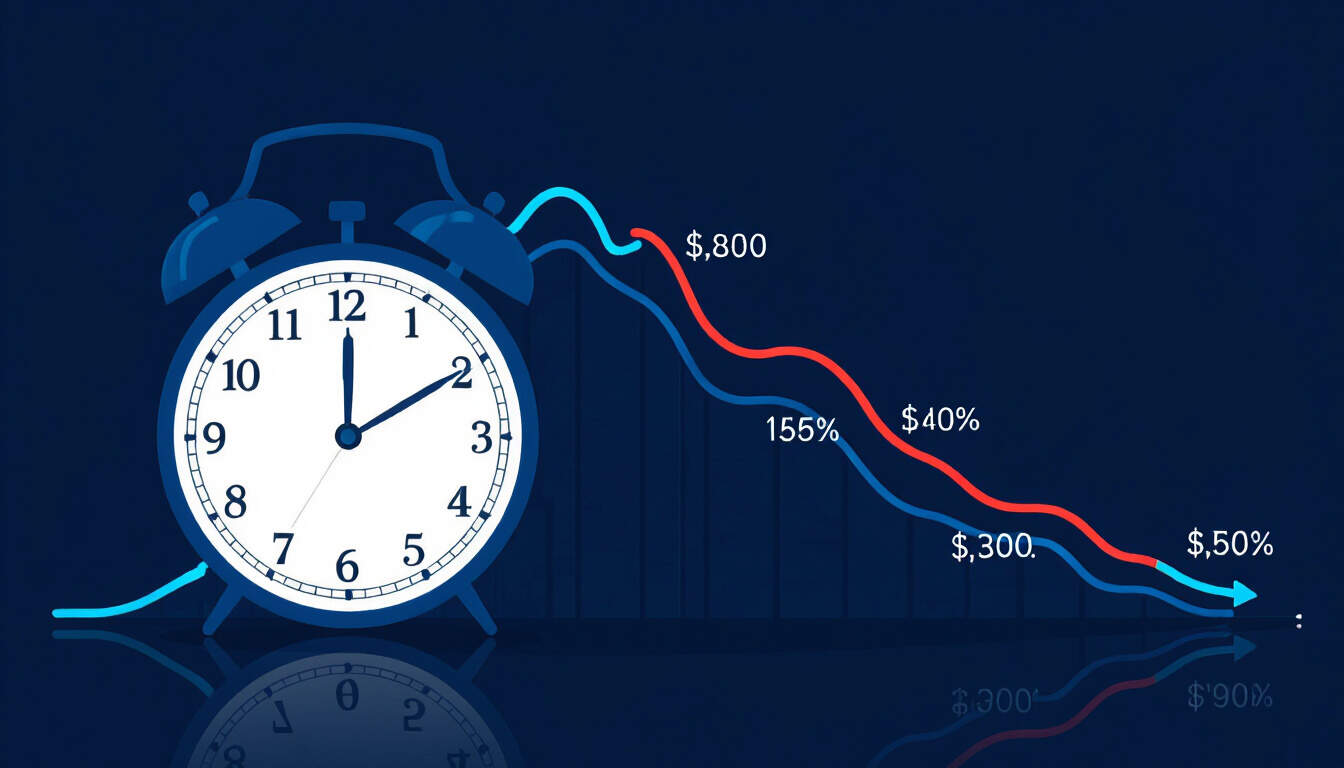Theta Decay and Its Role in Compounded Leverage Systems
 by Marlene Keeling
by Marlene Keeling
Theta decay represents the erosion of an option's value over time, offering strategic advantages in compounded leverage systems for investors. This article examines how this phenomenon can enhance returns while managing risks in advanced investment approaches.

Theta decay is a key element in options trading that affects the value of derivatives as time passes. In financial markets, this process can influence strategies involving compounded leverage, where investors amplify their positions to potentially increase gains.
Professionals often observe theta decay in options contracts, where the premium diminishes daily until expiration. For instance, an at-the-money call option might lose a percentage of its value each day, providing opportunities for traders to profit from time-based erosion rather than price movements.
In the context of compounded leverage systems, theta decay integrates with borrowing mechanisms to build layered positions. Investors might use options to create leveraged portfolios that compound returns over multiple periods. This approach requires careful monitoring of market conditions and contract specifics to maximize benefits.
One way to apply theta decay is through strategies like covered calls, where an investor holds a stock and sells call options against it. As theta decay occurs, the sold option's value decreases, allowing the investor to retain the premium. When combined with leverage, such as margin loans, this can lead to compounded effects on overall portfolio growth.
Consider a scenario where an investor allocates funds to a leveraged ETF that tracks an index. By adding options positions that benefit from theta decay, the investor creates a system where daily decay contributes to returns, potentially compounding with the ETF's leveraged performance. This method demands analysis of volatility and interest rates to ensure alignment with investment goals.
Benefits of Integrating Theta Decay
There are several advantages to incorporating theta decay into compounded leverage frameworks. First, it offers a consistent income stream from option premiums, which can offset costs associated with borrowing for leverage. Second, in stable markets, the predictable nature of decay allows for precise planning of entry and exit points.
For example, in a low-volatility environment, selling options with high theta values can generate reliable cash flow. When this is paired with compounded leverage, the returns from decay can amplify the effects of small price changes in underlying assets. Lists of potential outcomes help in evaluation:
- Increased cash flow from premium collection
- Reduced net exposure through hedging
- Potential for exponential growth in leveraged positions
However, risks must be acknowledged. Theta decay accelerates as options near expiration, which can lead to unexpected losses if market shifts occur. In compounded leverage systems, any downturn can magnify losses due to the borrowed funds involved.
Risks and Mitigation Strategies
High leverage combined with theta decay can expose investors to margin calls or forced liquidations. To mitigate this, professionals might diversify across various assets and time frames, ensuring that decay-based strategies do not dominate the portfolio.
Analytical tools, such as option pricing models, aid in forecasting decay rates. By examining historical data, investors can simulate how theta decay interacts with leverage over time. This analysis reveals patterns that inform decisions on position sizing and timing.
In practice, a balanced approach involves limiting leverage ratios and setting stop-loss levels. For instance, an investor might cap leverage at a certain multiple while relying on theta decay for incremental gains, thus maintaining control over the overall system.
Practical Applications in Portfolios
Many financial analysts incorporate theta decay into broader investment plans. In a diversified portfolio, options strategies driven by decay can complement equity holdings, providing a buffer against market fluctuations.
Over time, the compounding effect of reinvesting decay-derived premiums can lead to significant growth. This requires regular assessment of performance metrics to adjust strategies as needed. For experienced users, software platforms offer real-time data on theta values, enabling precise execution.
Ultimately, the interplay between theta decay and compounded leverage offers a sophisticated tool for advanced investors. By focusing on time-sensitive opportunities, professionals can achieve enhanced outcomes in their financial endeavors.
In summary, theta decay serves as a foundational component in optimized leverage systems, promoting disciplined investment practices.
